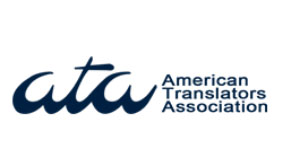- Is your translation a machine translation?
No. A machine translation is performed by
translation software, usually without professional translators involved
in the process; the resulting translation accuracy can go from 30% to
90% depending on two factors:
1) the complexity and subject of the
material to be translated and
2) the translation software quality.
You
could have an extremely cheap translation through this technology, but
it might be quite disappointing in terms of usability and reliability.
- What is your turnaround time for translations?
- What file formats can I send you?
We can work with pretty much any file format, however, we prefer to
work with the source formats wherever possible (most commonly any MS
Office format is available: Word, Excel, Power Point, Publisher). The reason for this it we can ensure
non-restricted access to your document in order to carry out the
required service to best quality and with maximum efficiency.
If source
formats are not available I will accept formats such as PDF.
- How can I send you my document?
- Fonts.
If your file contains unusual fonts that you wish to keep on the translated version, please include them along with your file.
1 Provide a clear original source text, with few if any grammar mistakes.
2 Give a good contact number or email so that I can contact you with any questions about the source text or translation.
3 Decide on and inform me of you target audience. Focusing on a target audience in the translation will increase your effective communication greatly.
4 Try to avoid company specific jargon in your original text, or replace this jargon with more universally know terms if possible.
5 Allow enough time from the day you order to your deadline for a quality translation to be produced. (Last minute orders can be done, but more time allows for more detailed attention and editing)
- What forms of payment do you accept?
- Is there anything I can provide to you to help with my translation?
1 Provide a clear original source text, with few if any grammar mistakes.
2 Give a good contact number or email so that I can contact you with any questions about the source text or translation.
3 Decide on and inform me of you target audience. Focusing on a target audience in the translation will increase your effective communication greatly.
4 Try to avoid company specific jargon in your original text, or replace this jargon with more universally know terms if possible.
5 Allow enough time from the day you order to your deadline for a quality translation to be produced. (Last minute orders can be done, but more time allows for more detailed attention and editing)
- What is a proofread?
A proofread is a review and edit by a second translator to ensure the
context of the original text has been fully understood and translated
accurately. A proofread is particularly important for business
translation as there is usually more than one way to say the same thing
and the second translator can ensure the appropriate tone of voice has
been adopted and conventions followed.
- Can you re translate material that has been poorly translated in the past?
Sometimes we can. However, it is more economical for the client to have a translation
created from scratch rather than fixing a document that has not been translated
by a professional translator. Usually, for correcting documents that have not been
created by a professional, Horus Translations charges per hour rather than per word.
- Why invest in a Spanish Translation?
A well-crafted, professional Spanish translation will help a business
communicate with the Hispanic community and reach the most rapidly
expanding market in the United States.
There is little doubt about the
ever-growing influence of the Hispanic demographic in the U.S. Furthermore,
Latinos are projected to account for almost 25% of the total U.S.
population by the year 2050. U.S. Given the Latino segment's incredible
growth, size, and increasing purchasing power, businesses and
organizations cannot afford to ignore this portion of the population.
Though billions of dollars are spent each year on marketing to U.S.
Hispanics, a great deal of advertising steers customers to either an
English-only website or a Spanish minisite with limited information. Marketing studies show that most U.S. Hispanic consumers prefer to
receive information in Spanish, and organizations that consider this
preference will realize the greatest benefit from their marketing
campaigns. Access to education, legal, and health care services is critical and,
in some cases, may even be a matter of life or death. In order to
provide the very best treatment, education, and support to
Spanish-speaking clients, a service provider should make written
materials available in Spanish. In many cases, offering Spanish versions
of materials is not just an ethical consideration; federal laws require
government-funded organizations to provide language access for those
with limited English skills.
Important:
The translator should be a native speaker of the target language, in other words, the final language of the translation. That means if you are translating from English to Spanish, you should look for a native speaker of Spanish, not of English.There are many native English speakers who have studied Spanish in school or spent time in a Spanish-speaking country. However, someone who speaks Spanish very well but is not a native will normally not be able to write exactly like a native speaker would. A native speaker would be able to tell the difference. If your translation is aimed at multiple countries, let the translator know. Although there is no such thing as a single "universal Spanish," the translator can try to be as neutral as possible, avoiding vocabulary that is only used in a specific area.
If you have any questions, please do not hesitate to contact me at:





